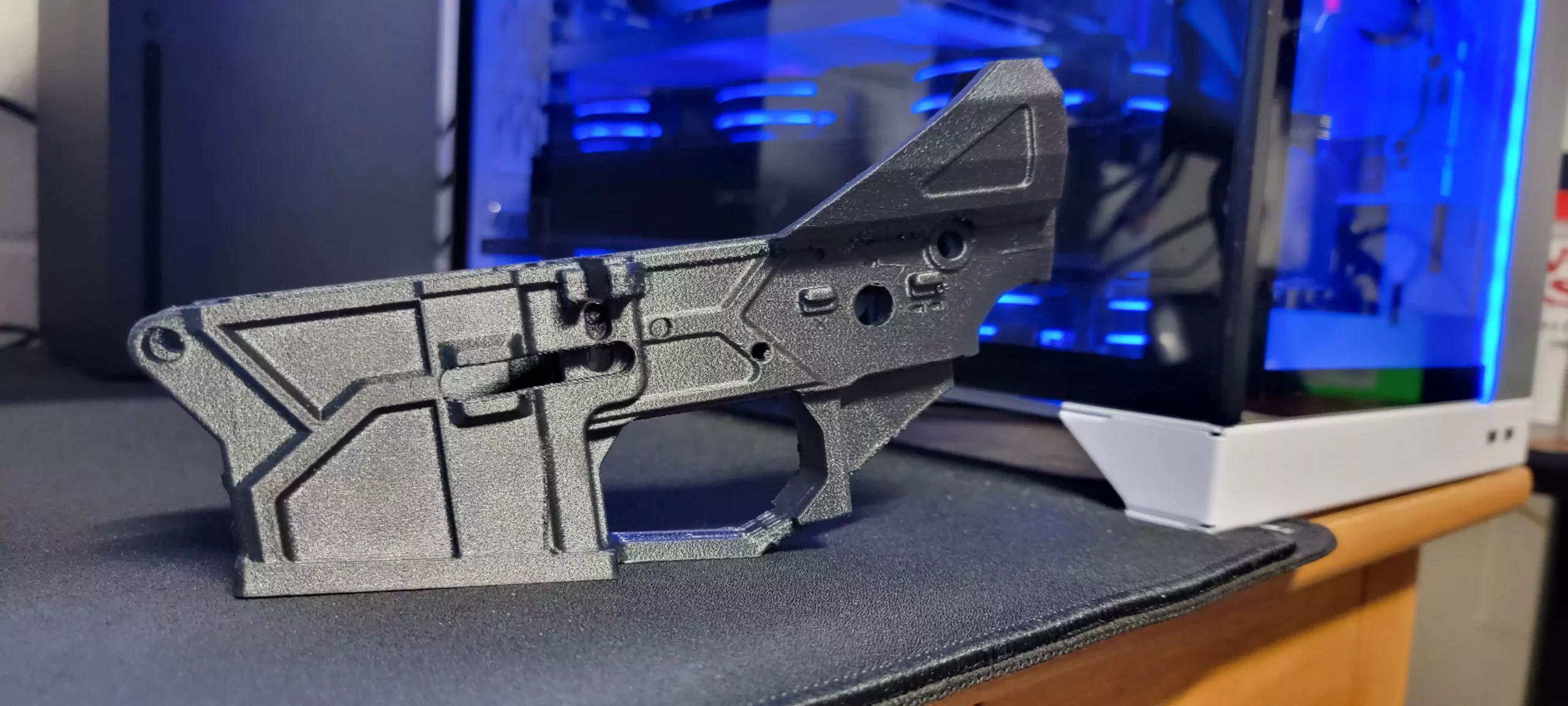Yes, it’s technically possible to 3D print a lower receiver for an AR-15 rifle. However, there are significant limitations and legal hurdles to consider.
So, let’s dive deep to get a clear idea.
Understanding 3D Printed AR-15 Lowers
AR-15 lower receivers are typically 3D printed using filament materials like ABS plastic or nylon. While these materials can be strong, they may not withstand the stress and heat generated by firing high-powered rifle rounds. Metal lowers are generally considered much safer and more reliable.
Advantages and Limitations
The main advantage of 3D printed AR-15 lowers is the ability to create custom designs. However, the limitations are numerous. 3D printed lowers may be weaker, more prone to breakage, and have shorter lifespans compared to metal lowers. Additionally, the printing process itself can be time-consuming and requires specific expertise.
Fact Check: Can You 3D Print an AR-15 Lower?
The answer depends on your definition of “can.” Technically, the ability exists. However, creating a safe and functional 3D-printed AR-15 lower for everyday use is challenging.
The Truth Behind the Claim
The idea of 3D-printed guns gained notoriety when Cody Wilson, a gun rights advocate, released downloadable blueprints for AR-15 lowers. This sparked debates about gun control and the accessibility of firearms.
Cody Wilson’s Response
Wilson argued that 3D printing technology could not be effectively banned and that freely available information empowers individuals. However, concerns remain about the potential misuse of such technology.
Latest Developments in 3D Printed AR-15 Lowers
While 3D-printed firearms haven’t become mainstream, advancements in 3D printing technology are ongoing.
Porsche’s Use of 3D-Printed Pistons
For example, Porsche is exploring 3D-printed pistons for their race cars. This demonstrates the potential for 3D printing to create strong and functional parts under extreme conditions.
Generate Topology Optimization for 3D Printing
Companies like Generate are developing software that optimizes designs for 3D printing, potentially leading to stronger and lighter firearm components in the future.
The Rise of Ghost Gunner Machines
“Ghost Gunner” kits allow users to partially complete their own AR-15 lowers using a milling machine. While not strictly 3D printing, these kits raise similar concerns about circumventing gun control measures.
Legal and Safety Concerns
There are significant legal and safety concerns surrounding 3D-printed AR-15 lowers.
Scams and Risks Associated with 3d Printed AR-15 Lower
Online resources promoting 3D-printed guns may be scams or lack crucial safety information. A poorly designed or printed lower could malfunction and cause serious injury.
Government Regulations and Restrictions
In some countries, regulations restrict access to 3D-printed gun blueprints or require special permits for printing firearm components. These restrictions aim to prevent the proliferation of untraceable firearms.
Conclusion
3D printing technology has the potential to revolutionize manufacturing, but its application in firearms remains controversial. While technically possible, 3D-printed AR-15 lowers currently pose safety and legal challenges. The future of 3D-printed firearms will likely depend on advancements in materials, regulations, and responsible use of this technology.

